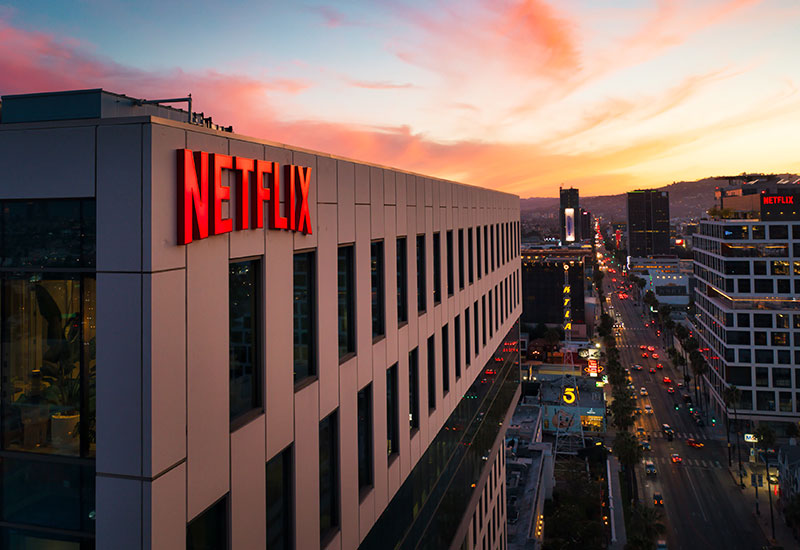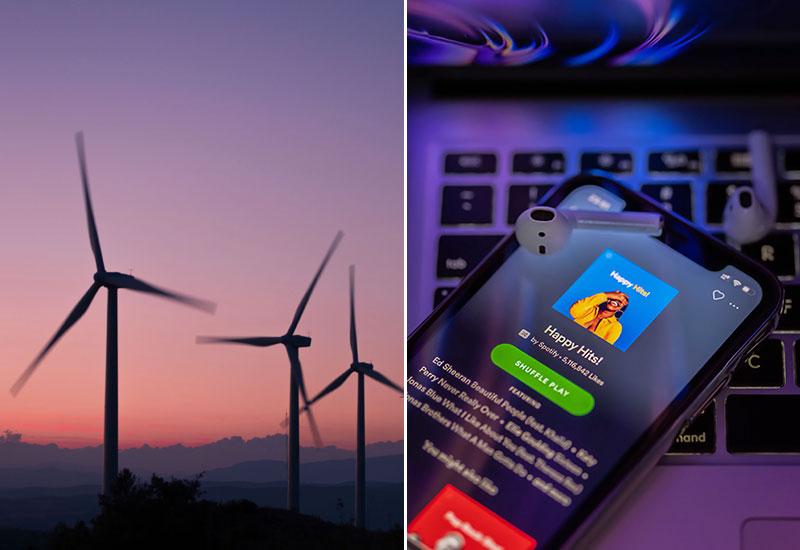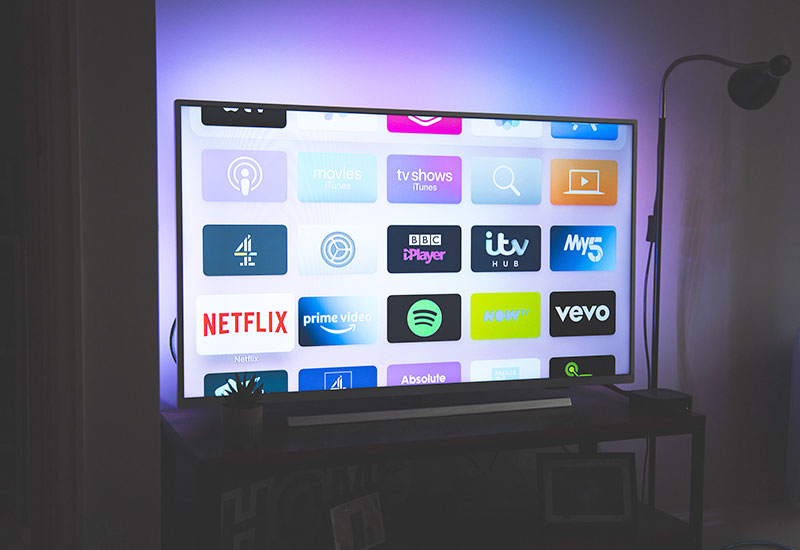How sustainable is streaming? If you're looking for a clear answer to this question, you've come to the right place! The Internet and digital offerings consume electricity - everyone knows that. But only very few people know exactly how much. Especially the simultaneous download and playback of video content via data stream, on devices connected to the Internet, such as smart TVs, smartphones or computers, is an ecological problem. In fact, so-called video streaming is one of the biggest power guzzlers of our time.
In this article, I want to give you everything you need to know about the sustainability of streaming. You'll learn about power consumption statistics, the most popular streaming services, a comparison to other industries, and useful tips to help you stream in a more environmentally friendly way. Let's go!
How much power does streaming consume?
What is the factual situation? Over 221 million people worldwide use the streaming service Netflix. In Germany alone, the figure is almost 10 million - and rising.₁
And probably few users are aware of what a relaxed series marathon can actually mean for the environment. Streaming a movie in razor-sharp 4K quality requires between 220 and 1000 watt hours of energy. The direct power consumption from streaming via Netflix is said to have amounted to 51,000 MWh of electricity in 2018.₂
But that's not all by a long shot: In addition to the energy costs required by streaming itself, there is the energy consumption that results from storing the movies on gigantic server farms. Thus came Netflix In 2018, total energy consumption of approximately 245,000 megawatt hours - and thus contributes massively to the climate change at.
By way of comparison, a household with 4 people in Germany consumes between 2,600 and 5,000 kilowatt hours per year. The energy volume of Netflix alone could therefore supply between 49,000 and 94,230 households in Germany or 196,000 to 376,920 people with electricity for 365 days.
And Netflix is not the only big streaming service: Amazon Prime, AppleTV and Sky are also available.
The biggest streaming services at a glance

In the next step, I would now like to take a look at the biggest streaming services in the world₃:
- Amazon Prime: Amazon's streaming offering has knocked Netflix off its throne in 2022: With 31 percent market share, the streaming giant has overtaken Netflix.
- Netflix: With a 30 percent share of the streaming market, Netflix is now only the second largest streaming provider worldwide.
- Disney+: Disney+ is the third-largest streaming service with 18 percent. It is probably also the provider that few people notice in terms of its size.
- Sky: Sky is one of the first providers to maintain its market share of around 7 percent.
- AppleTV: AppleTV has a surprisingly low 5 percent share of the streaming market.
Assuming all streaming providers have roughly the same electricity consumption, we arrive at a total global electricity consumption of video streaming of 816,000 megawatt hours per year - based on 245,000 MWh from Netflix with 30 percent market share!
To take up the comparison from above again: This could...
- 163,200 to 313,868 4-person households in Germany or
- 652,800 to 1,255,384 people in Germany
...be supplied with electricity for 365 days.
And this is not yet the latest data, but data from 2018. The current consumption figures for Netflix and Co. are likely to have risen significantly again - at the latest since the Corona crisis.
CO2 emissions in comparison: streaming VS air traffic & television
Air travel is still ahead of streaming in terms of CO2 emissions. But that could change pretty quickly. According to projections₄, total power consumption in the IT industry is already equivalent to the CO2 emissions of international air traffic. Add to this the fact that around 80 percent of data traffic on the Internet is attributable to video content₅, and we're not far away from streaming being on a par with international air traffic in terms of CO2 emissions.
At this point, the question naturally arises: Are "old" technologies, such as television or DVDs, actually more environmentally friendly than streaming?
Is television more sustainable than streaming?
The answer is pretty clear: YES. This is because, via television, millions of people watch a movie via a single transmission. With streaming, each individual device would trigger its own transmission. This causes the amount of data transfer and power consumption to skyrocket millions of times.
And DVDs? Movies on data carriers are also much more environmentally friendly than streaming via the Internet. Although energy is used to produce the physical data carriers, films on DVDs can still be watched many times or even passed on to friends and family. This is in stark contrast to streaming content. Every time a film is viewed again, the same amount of electricity is consumed and CO2 emissions are produced.
It's just that it's less convenient to be able to choose from "only" around 100 TV channels or DVDs instead of thousands of movies and series. That's exactly why streaming is so popular.
What to do. 5 tips to increase the sustainability of streaming

Is there any way to improve the sustainability of streaming? Even if watching TV and DVDs is more environmentally friendly, many people certainly don't want to give up the convenience of streaming on demand. But what can we do to make streaming at least as environmentally friendly as possible? The following tips do their part!
1. use green electricity
Green electricity becomes off renewable energy sources won. So find out whether your electricity provider also offers green electricity - and if not, you should Switch to a green electricity supplier. Do not worry: as a rule, the prices do not differ.
Tip: Incidentally, green electricity is also an important factor for the Website sustainability. Click on the linked post to learn more about green web design and how you can make your website more environmentally friendly.
2. reduce video quality
The highest video resolution is usually not necessary at all - and nevertheless often set automatically. Especially on small screens like smartphones or tablets, you don't need HD resolution at all! Therefore, simply turn down the video resolution in the device settings, the video player or (if possible) the account settings of your streaming provider. This way, you can make a positive contribution to the sustainability of streaming.
3. climate-friendly fiber optic network
Not all streaming is the same - it all depends on the network quality! Streaming via a 3G Internet connection, for example, is much more environmentally harmful than streaming via the state-of-the-art fiber optic network. So try to connect to the Internet via your W-LAN instead of surfing the mobile Internet.
Tip: More advice on sustainable surfing on the internet you get in the linked post!
4. use smaller screen
On a smaller screen, not only do you need a lower resolution for the image to be sharp, but you also have fewer pixels to fill. So the fewer pixels your screen has, the less energy it uses to stream!
If you don't have a problem with small screens, you should consider, instead of streaming on the TV, only stream on the laptop or smartphone.
5. music streaming on Spotify instead of YouTube
If you listen to a lot of music via YouTube, you should consider switching to a music streaming service like Spotify. This is because YouTube always loads (and doesn't even watch) the picture as well as the audio - and that consumes much more power than streaming an audio file. If that's not an option for you, you should at least lower the video quality as much as possible here as well to improve the sustainability of streaming at least somewhat.
Bonus Tip Download favorite movies and series: There are series that you just can't get enough of? Movies that you watch over and over again without getting bored of them? If so, then you should download these movies or series once so you don't have to keep streaming them. Alternatively - and if you're a bit retro - you can buy a DVD.
So is streaming bad for the environment?

The answer is sobering and at the same time clear: Yes, streaming is quite harmful to the environment because it consumes large amounts of energy and emits CO2. And it does so over and over again. In principle, a streamed movie is the Disposable product among digital content.
If you also consider the fact that streaming on Netflix and Co is "just" entertainment, and not an "energy investment" that advances the country, the economy and the world, the extreme expense of natural resources downright absurd. Video conferences via providers like Zoom, Google Meet or Microsoft Teams are just as resource-intensive, but at least serve mainly educational and work purposes.
With the tips described in the article, you can at least reduce the energy consumption of your streaming somewhat. However, you should always ask yourself to what extent streaming is really necessary or whether you can limit your streaming consumption somewhat. At best, of course, you can do without streaming altogether.
I hope this post has made you more aware of the environmental impact of streaming and encouraged you to consume video more sustainably. Do you have any questions, suggestions or further tips? Then I look forward to your comments.
Stay sustainable,

PS: Besides streaming providers, it's hard to imagine our everyday lives without smartphones. How you telephone as sustainably as possible or a Counteract cell phone addiction you can find out now in the next blog articles.
References:
₁ H. Könitzer: Current Netflix user figures in Germany and worldwide (as of 25.04.2022), available at https://championstream.de/netflix-nutzer. [25.11.2022].
₂ Watson: Netflix electricity consumption nearly doubled in 2019 (as of Feb. 11, 2020), available at https://www.watson.ch/digital/energie/607817413-der-stromverbrauch-von-netflix-hat-sich-2019-fast-verdoppelt. [25.11.2022].
₃ C. Always: Streaming Services Market Shares - This is the New Number One (as of 04/26/22), available at https://onlinemarketing.de/cases/marktanteile-streaming-dienste-neue-nummer-eins. [25.11.2022].
₄ A. Grüneberg: Internet use causes almost as much CO₂ as air travel (as of 27.12.2021), available at https://www.rnd.de/wirtschaft/klimaschutz-internetnutzung-bei-co-ausstoss-fast-gleichauf-mit-flugverkehr-warum-CVT7IG35EBCLPFOFSDV75J3RI4.html. [25.11.2022].
₅ M. Hauck: Streaming the next video better over fiber (as of Sept. 10, 2020), available at https://www.sueddeutsche.de/digital/streaming-klima-studie-1.5027701 [Nov. 25, 2022].





